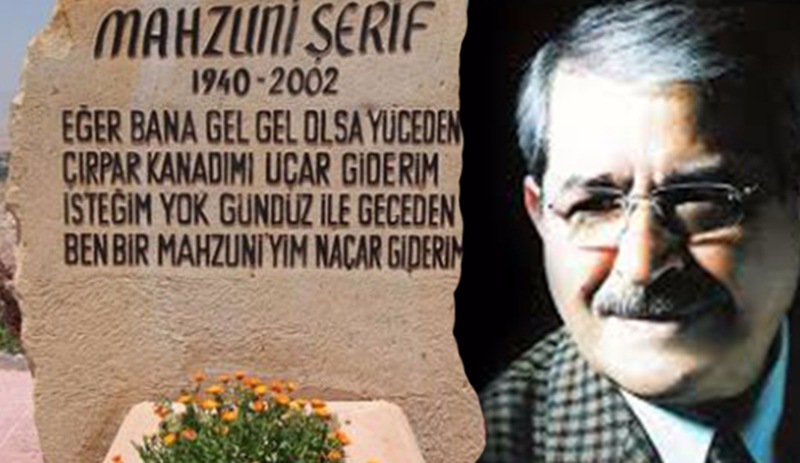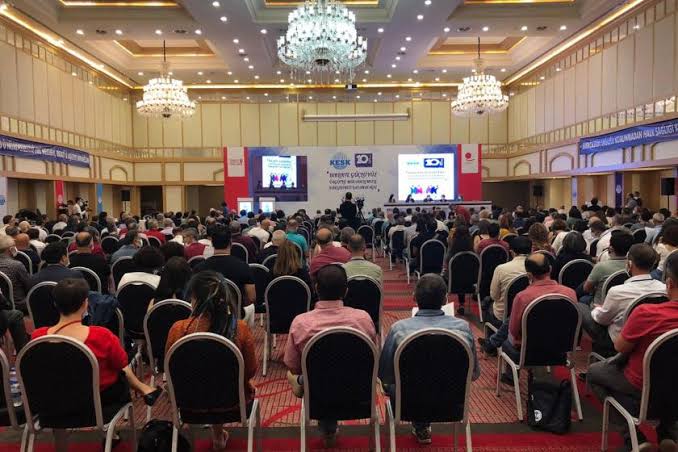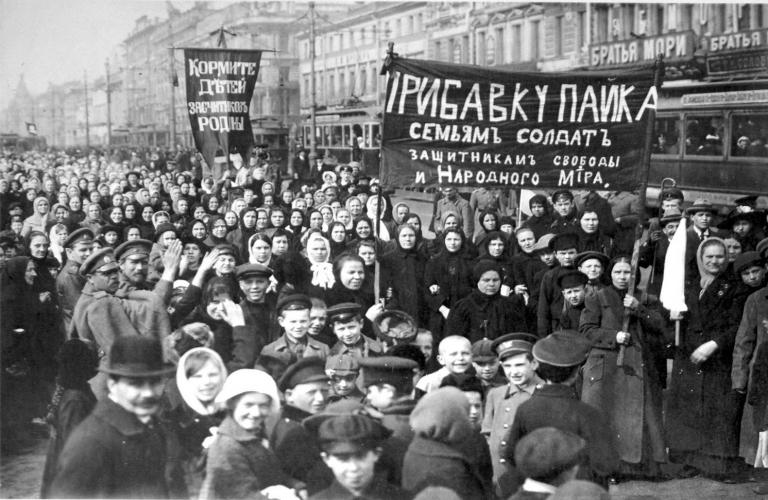- 2026’ya Girerken Dünyanın Durumu – V. U. Arslan - Aralık 31, 2025
- Öcalan Marx’ı Yine Aşmış da Nereye Varmış? – Güneş Gümüş - Aralık 14, 2025
- ULUSLARARASI SAVAŞ KARŞITI FİLM FESTİVALİ ÖDÜLLERİ SAHİPLERİNİ BULDU ! - Aralık 10, 2025
The wave of uprisings, which began in Tunisia and continued in Egypt, was generally called the ‘Arab Spring’. Many have objected strongly to this definition for it doesn’t cover enough the extent of the large transformations took place. Those who made this objection highlighted the ‘Arab Revolutions’ as an alternative to ‘Spring’. This time it was emphasized that the transformations that took place were too shallow, namely, meaningless, there was not enough radical change. And also it was pointed out that the movement didn’t have a program of its own and the Muslim Brotherhood was eventually took the power. Another option was to define the process in terms of insurrection or rebellion, but they could not express the issue as a process because they described the instantaneous, short-term explosions. In this case, between the two common usages, ‘Spring’ and ‘Revolution’, which one should be preferred? We are in favor of the description “Arab Revolutions”.
What happened in Egypt and Tunisia is not a social revolution (at least not yet) in which the relations of production have changed, but a real political revolution in the sense that the existing power is overthrown by millions. In this respect, the expression of Arab Revolutions for Egypt and Tunisia is correct. The process has weaknesses in terms of content, yet it cannot be enough to refute the definition of political revolution. In spite of the fact that two years have passed since the collapse of the bourgeois dictators, the mass movement is still very strong, and in Egypt and Tunisia, the Muslim Brotherhood regime is shaking, while the masses are continuing to move to the left.
Categorising the Revolts
Talking about the general weakness of the debate on definitions is necessary in order to explain our choice of focusing on Egypt for this study. Both the ones who call the process revolution and the ones who call it conspiracy are making the same mistake. They put different Arab countries and the insurrections occurred in these countries in the same equation and generalize them. However, these uprisings directed to the dictatorships have to move in different directions because of their inherited historical context. Egypt and Syria, Tunisia and Libya, Yemen, Bahrain, Jordan… All these countries have different internal and external dynamics. For this reason, a single explanation, a generalization of revolution (or conspiracy) covering all Arab countries is not at all compatible with the facts. According to this rough classification, the main uprising that must excite the workers of the world are those experienced in Egypt and Tunisia. The movement in these countries is mainly driven by class-based slogans, claiming to include the whole nation and is strong in terms of uniting the workers from different identities. As a matter of fact, workers, women, leftists, socialists and oppressed people come to the forefront; a new flow of energy is spreading to literature, art and the values of imperialist capitalism are being questioned, while the fanaticism is being declined. What happened in Egypt and Tunisia, therefore, has a great potential. Especially Egypt with its 85 million population is the center of the process called the Arab Spring. Keeping in mind that Egypt is already the heart of the Arab world, we understand how decisive the process in Egypt is. Therefore, in this study it would be more accurate to put Egypt into the center.
Although there are differences between Egypt and Tunisia, there are wide public movements expressing the interests of laborers and youth in these countries and these examples express the future of Arab insurrections in the sense that the class struggle comes to the forefront. In this context, we will touch upon the movement in Tunisia, as much as possible, for some important analogies and divisions. But the center of the study will be Egypt as the heart of the Middle East and the Arab Revolutions. What will happen in Egypt in the coming period will not only affect the Arab world but also the whole world and especially us.
Not Syria nor Libya but Egypt and Tunisia
After many years of silence, the exploding popular movements in Tunisia and then in Egypt, has overthrown the dictators who were in power for decades. These insurrections, which herald a growing new generation, were greeted with great sympathy all over the world. Tahrir Square, held millions of people ready to pay the price, has become a symbol of the whole world with its fighting spirit and courage. People from US-based Occupy movement, from Greece and Spain, where the crisis paralyzed the lives of the working people, and indeed from the struggles all over the world, send greetings to Tahrir. After the overthrow of Bin Ali and Mubarak, the struggle did not go off the boil in these countries. While the masses were facing new problems, they made mistakes because of the lack of organization and programs, still they did not stop. While struggle continue with new questions and problems in the new process, the news of riots from Libya and Syria were raised. The themes in the protests around Libya and Syria were initially similar to those in other countries. However, these protest movements changed the trajectory because of the reason that these countries have a unique national and international positions. The rebellion movements in Libya and Syria turned out not to be the struggle for social justice and democracy in the interests of the vast majority of the population, but turned into tribal-sectarian-ethnic conflicts. The US and its allies were to direct the process which was rapidly evolving into civil war.
Thus, the imperialist powers were hitting a lot of birds with one stone: Libya’s underground treasures were plundered, Gaddafi who had close ties with Russia and China was overthrown, and the Arab Spring was discredited worldwide as a whole by creating the illusion that it was ‘planned by USA’. With the NATO bombs, Gaddafi was brutally murdered, and the supporter tribes of him were destroyed. In Syria, NATO forces took control of the rebellion. They armed the opponents immidiately, organized the ethnic-sectarian slaughter. Since the fall of the Assad regime would be a major blow for Iran and Russia, they are still doing their best to fuel the civil war. Syria is currently experiencing the same scenario of Afghanistan. Within the armed opposition, the control is more and more falling in the hands of Salafi fanatics. The triumph of them, everything aside, will mean genocide and ethnic cleansing, and will cause Syria to become stuck in the swamp of war for many years.
Throughout the process, NATO interfered to Libya and Syria, while the Muslim Brotherhood in Egypt and Tunisia came to power. These developments caused the overlooking of the dynamics behind the Arab Spring. People around the world and also in Turkey began to believe that the Arab insurrections were some kind of conspiracy of the United States but the mass movement started to shake the Muslim Brotherhood in Egypt and Tunisia. This, in turn, showed that the matter could not be seen simply as a Western set-up. In Egypt, a new zone of struggle is on the way, millions of laborers, led by a new generation of struggle, are fighting against the Muslim Brotherhood to death, paying the price and continuing their struggles with new concepts and ideas. Egypt and Tunisia, the starting point of the Arab Revolutions, the center of the Arab geography (especially Egypt), and the most advanced countries which are the decisive factors for the movement are to lead the process.
Arab Revolutions Point to the Defeat of Political Islam
Another point not to be missed is that the revolts in the Arab countries cannot be discussed independently from the big crisis of capitalism. Tens of millions of young people in the whole Middle East have no hope of having a proper job to build a good future for themselves. The working youth are thought to be the deadstock of the cheap labor country. Besides, the depressed unemployed masses are accumulated in cities. The cost of living is heavy for the laborers. Moreover, the masters of this system of exploitation, which was an affliction for the laborers, enjoyed themselves with their rotten regimes, corruptions, luxury lives, and authoritarian police state practices. All these were the main themes of the Arab insurrections and showed that the class issues were the core of the insurrections. As a matter of fact, the organized workers’ movement in both Tunisia and Egypt was the decisive factor in overthrowing the dictators. When the Muslim Brotherhood, who came to power in two countries after the dictators were overthrown, were targeted by the mass movement, the trade unions and the organized labor movement still played a decisive role. In Egypt, the youth movement and organized working class are leading the movement, while it is the trade unions in Tunisia. The weakest point of the revolts from the beginning was that it didn’t have clear lines in terms of its ideological-programmatic and organizational standpoints. Under the oppressive bourgeois dictatorships, it is quite natural that youth and working class cannot create advanced organizational forms. But it is a fact that this situation creates serious weaknesses.
The social energy accumulated during the long process came face to face with the question of how to make meanings from the slogans of “social justice” and “freedom’. After Mubarak, they fought against the military junta and they have been fighting against the Muslim Brotherhood since the fall of the military junta. The main slogan is ‘to complete the revolution’, yet the questions of what is understood by ‘to complete’ and how to proceed to that completion are still unsolved. The fact that social justice and freedom will remain unsolved without breaking away from the imperialist capitalist system is felt by young workers more.
These elements are the most advanced component of the movement and the main force that pulls the movement forward. In this context, small socialist formations, which are also confused in their own minds, are growing such stronger that they have a power in the street which cannot be overlooked. The main body of the mass movement is dealing with the bourgeois-imperialist powers and shifting to the left as a whole. It is necessary for laborer-youth groups to recognize that the completion of the revolution is possible by declaring the permanence of revolution and grow stronger by getting organized within this framework and lastly to internalize the perspective of socialist revolution and workers power. After all, millions of people cannot be vigilant for a long time with an ambiguous target and necessities to achieve that target. The uncertainty situation will begin to tire the masses after a certain period of time.
On the other hand, even if the mass movement experiences a sudden and long-term slowdown (the worst-case scenario), several thresholds have been passed and some historical trends have become cases. The first one is that a new generation of youth in Egypt and Tunisia has become so radicalized that even they faced up to die in political protests and they took a solid stance to fight against most strong bourgeois power, Muslim Brotherhood. This is an expression of the emergence of a new activist generation in Egypt and Tunisia (the pioneer of the general tendency in the world). Considering that the effects of the pro-Western secular liberals in these societies are very limited, it is an expected outcome that this new generation is affected by left policies.
In short, in the Middle East, the pointer, once again, turns to the left and to the socialists after a period of 30-35 years. This new generation is the candidate to lead the Middle East transformation in the future. The second historical tendency is that the political Islam is losing all its appeal, prestige and legitimacy for future generations. The fact that millions of Muslims in Egypt and Tunisia are acting against the Muslim Brotherhood proves that this process has already been in operation. In Egypt, which is the other center of the Islamic world after Iran, we can say that political Islam is losing all its moral superiority. Nobody can claim that the remaining Taliban, Al Qaeda, Saudi Arabia and its derivatives will have an appeal for future generations. Political Islam, which is capitalist exploitative, oppressive, imperialist collaborator, bigoted, has been tested for 30 years and this is the result.
*This article is a shorter version of the original.













